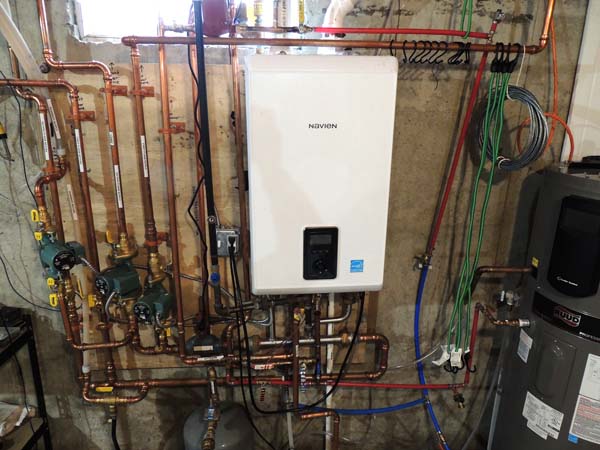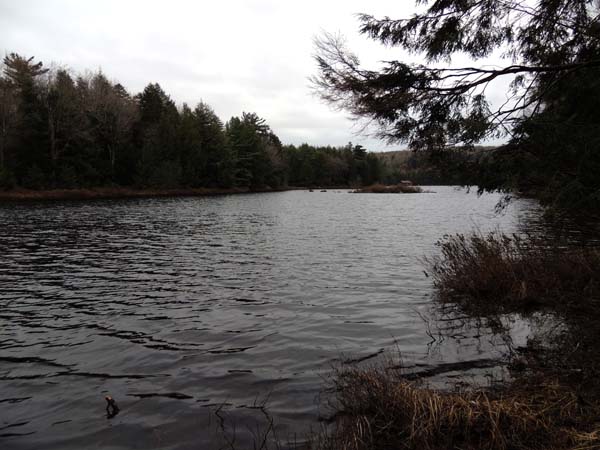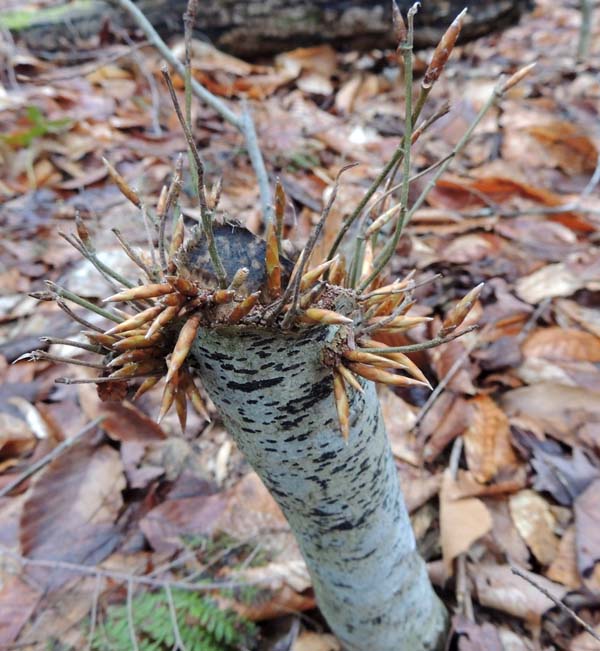|
|
|
a first aid kit for the cabin
Saturday, April 29 2023
location: 800 feet west of Woodworth Lake, Fulton County, NY
I had a typical Saturday morning at the cabin, eating buttered toast with my coffee and noodling around on my work-issued laptop. It was still cold enough for me to start u another fire in the woodstove, though first I cleaned out the ashes (which I dumped onto the weedy wasteland west of the cabin (where their minerals might improve the quality of the trucked-in sand that serves as soil).
Today I wanted to add a circulator pump to the basement boiler plumbing that would allow me to circulate water in a continuous loop starting from the top (output) of the heat-pump-based electric water heater (which has a large insulated tank of water), running it through the just-in-time propane-fueled boiler connections, and then back to the bottom of the heat-pump-based electric water heater. With the circulator, it should be possible over a fairly short period to bring the water in the heat-pump-based hot water heater tank up to warm water temperatures. Doing this would be a much better use of resources than trying to heat the water electrically with a resistive coil, which is how the tank would otherwise deal with bone-chilling water pulled out of the well. (These kind of hot water heaters reserve their heat-pump-based heating methods for small amounts of water added to the tank or to top-off heat being lost through the tank's insulation; to bulk-heat water, they revert to more primitive methods.)
As I was putting together the various parts I would need, I realized that the union fittings that had come with my circulator pump weren't really designed to be sweated (soldered) onto the end of a piece of half-inch pipe. Instead I was expected to screw them on to a 3/4 inch brass fitting. But soldering it always the most reliable plumbing connection, and there was no reason to do it any other way except for the looseness with which a half-inch copper pipe fit inside the fitting I wanted to solder it in. The difference in diameter was maybe only 3/32 of an inch, but this was enough to make me think solder wouldn't fill the gap. So I thought it would be a good idea to flare out the end of the copper pipe a little so it would fit more snugly, perhaps keeping solder from draining out if that flared end was on the bottom while soldering. I had a perfect tool to do this flaring: a crecent wrench with a long cone-shaped handle (also known as a "spud wrench"). If I slammed the cone-shaped handle into the end of the pipe, it would force it to flare out a little. Since copper is very ductile, this shape could be expanded with more such pounding. The going was slow at first, but I found the flaring could be sped up by first heating the end of the pipe with a torch burning MAPP gas. I was able to solder together all the parts for one side of the circulator pump and then solder it into place onto the hot water pipe leaving the boiler (the source of the hot wate in my new loop).
While I was flaring the end of the pipe for the second connection to the pump, I was working a bit too hastily and managed to slam the superheated copper pipe I wanted to be flaring into the side of my right pinkie finger. The contact was very brief, so I don't know how important heat was to the injury that resulted. All I know as that when I looked down at my hand, I saw it now had half-inch-diameter "C" cut into it. Blood started dripping from it immediately. One might think such an injury would hurt, but it didn't really. Nothing about the process of inflicting that wound was memorably painful.
It took some pressure and a fair amount of toilet paper to stop the bleeding. I then wrapped some tape around the finger and a wad of toilet paper. I could then continue with my work without any real handicap.
I had everything nearly back together, but was having trouble removing a plug held in place by a PEX pinch ring. As I fought with it using a channel-lock wrench, my wound started bleeding again, forcing me to stabilize and rebandage it.
Once I had the circulator in place and everything pressurized, I did a test run and found I was able to heat the tank in the heat-pump-based hot water heater in only about fifteen minutes using the propane boiler's just-in-time hot water system. The only problem was that a salvaged ball valve was leaking and I couldn't make the leaking stop. This was how I ended up driving down the mountain to the True Value hardware store in downtown Gloversville. There I bought a ball valve, some short pieces of PEX plumbing, and a number of impulse purchases (a hummingbird feeder, a magnet capable of lifting hundred-pound payloads, and some cable staples). I then went to the Family Dollar nearby and bought a tube of antibiotic salve and a box of BandAid-brand bandages for the cabin, which (as I'd discovered this morning) had no first aid kit of any sort.
Back at the cabin, I eventually went for a stroll down to the lake. It was cloud yand cool, and a drizzle was spitting down at me at times, but I still wanted to see the lake. In such bleak conditions, there was no wildlife to be seen, though I did take some pictures of early spring foliage.
This evening I baked myself a frozen pizza that I'd covered with slices of mushroom.
Periodically (and always unexpectedly) the injury on my finger would resume its bleeding, forcing me to clean up blood spatters and hold my hand in the air to get it to stop.

The boiler after my work today. You can see the new circulator pump (in brick red) to the upper left of the Navien boiler. It sends water horizontally over the top of the boiler and then down to the base of the Ruud heat-pump-based electric water heater on the right.
Click to enlarge.

A native bush in the understory called hobble bush. It's one of the first shrubby plants to get leaves, perhaps to get a photosynthetic jump on the trees that will be throwing them into shade.

The choppy water of the outlet bay, looking eastward.
Click to enlarge.

A fern fiddlehead.
Click to enlarge.

Atop a ridge west of the lake, the beavers had cut down all the trees. Here is a beech sapling that is trying to come back.

My pizza tonight before I put it in the oven.
For linking purposes this article's URL is:
http://asecular.com/blog.php?230429 feedback
previous | next |





